Abstract
Pigeons were trained on multiple schedules in which a fixed number of pecks produced either a fixed or a variable period of access to food, the average variable-duration reinforcement equalling the fixed. Pecking rates were generally higher during the variable-duration component. Subsequent performance on concurrent schedules revealed an initial preference for variable-duration reinforcement for all subjects; for most subjects, this preference was sustained. For one subject, the average variable duration was gradually reduced to half the fixed duration: continued preference for the variable component resulted in a loss of up to 30% of available reinforcement time. A return to multiple schedules with unequal pay-off shifted the preference to the greater fixed duration, and this preference was maintained even when the variable duration was again raised to equal the fixed duration. For the remaining subjects, the initial variable-duration preference on concurrent schedules was gradually replaced by a side preference. When the range of variable durations was varied, keeping the average variable duration equal to the fixed, the occasional longer reinforcers sustained a preference for variable-reinforcer durations for three of the four subjects.
Full text
PDF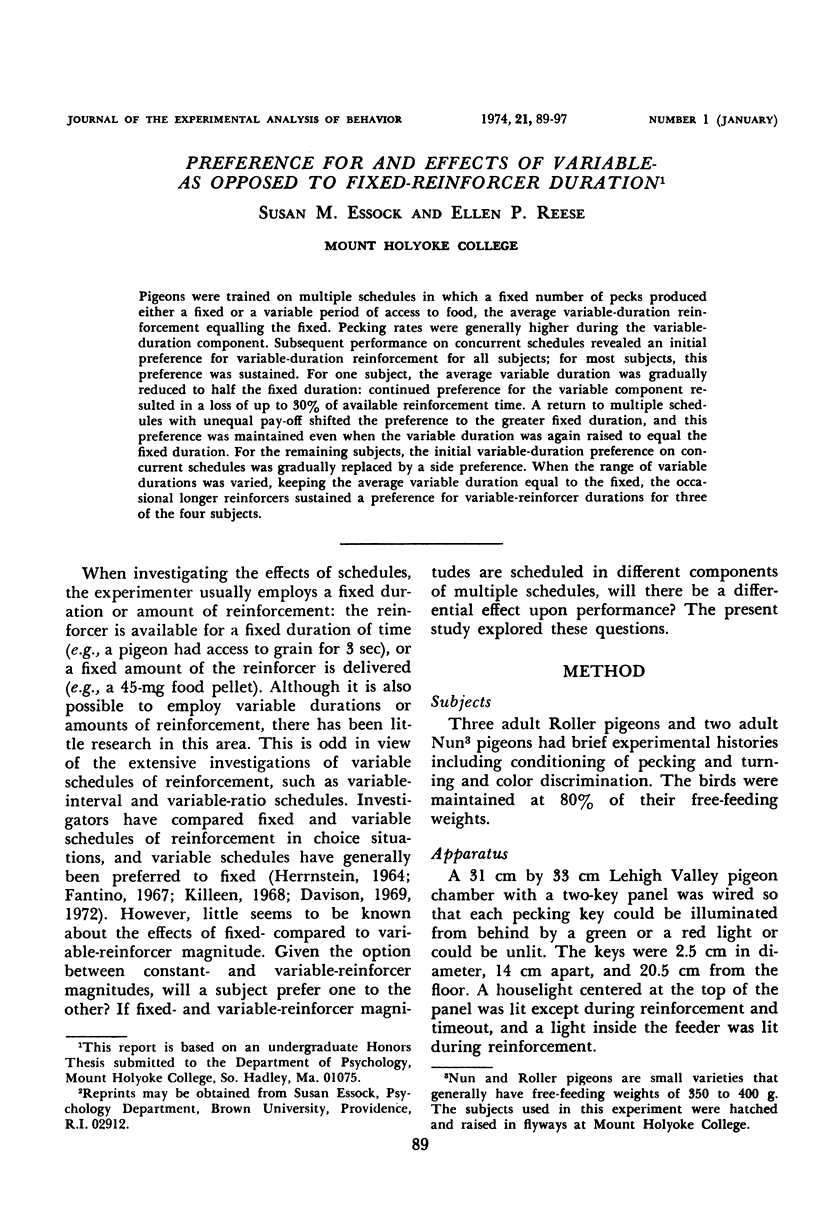
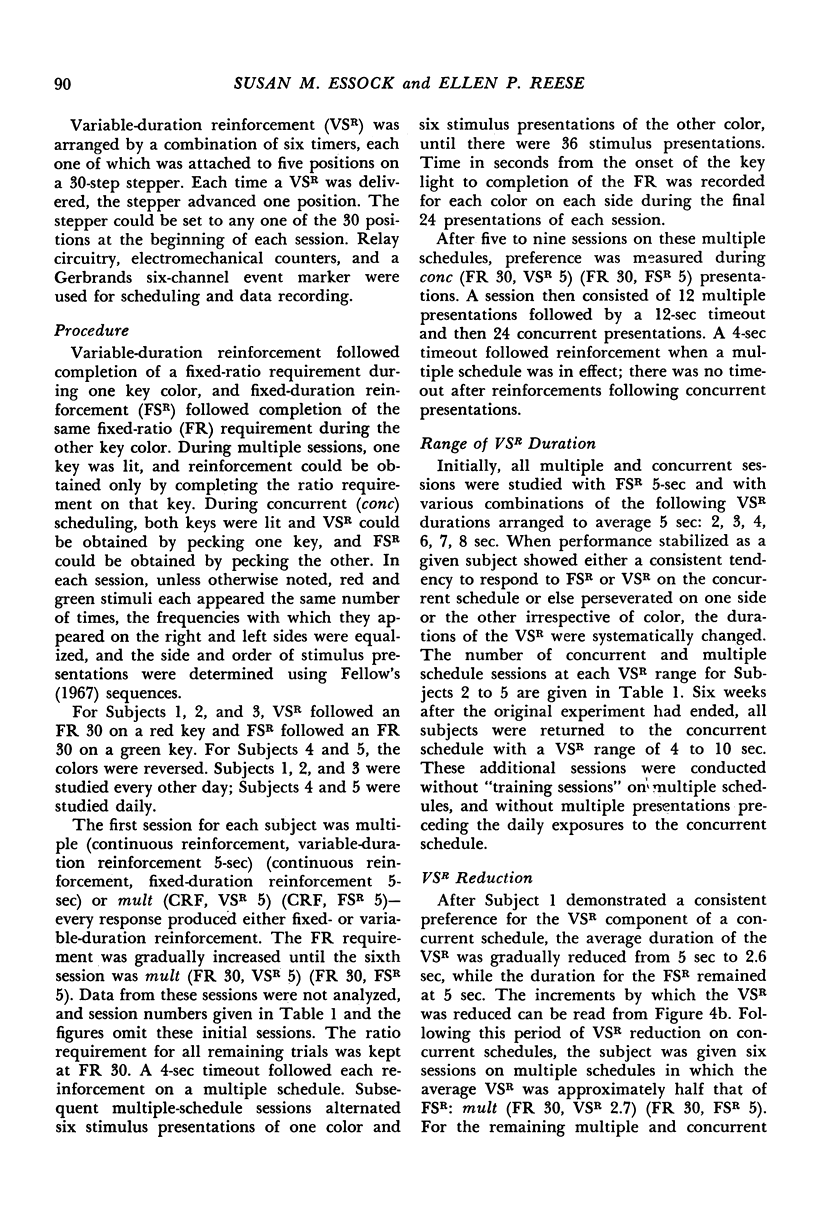


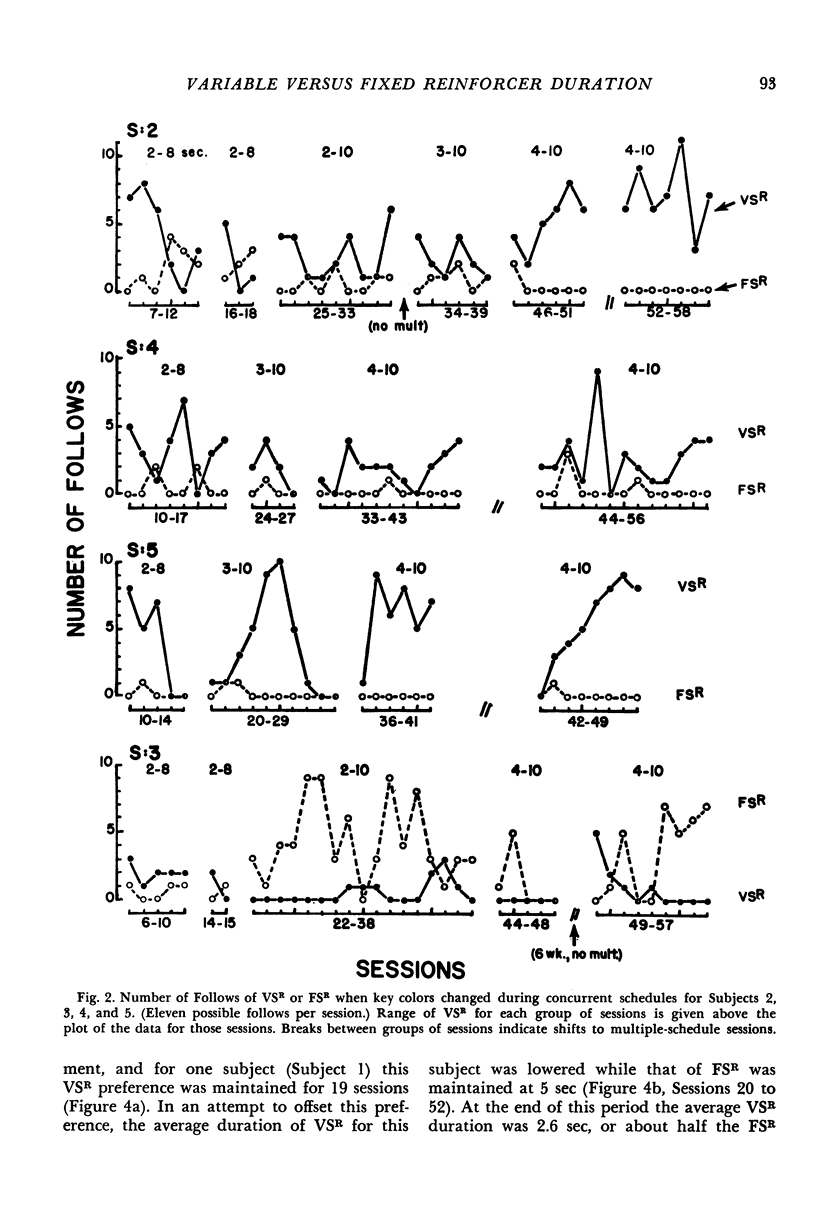


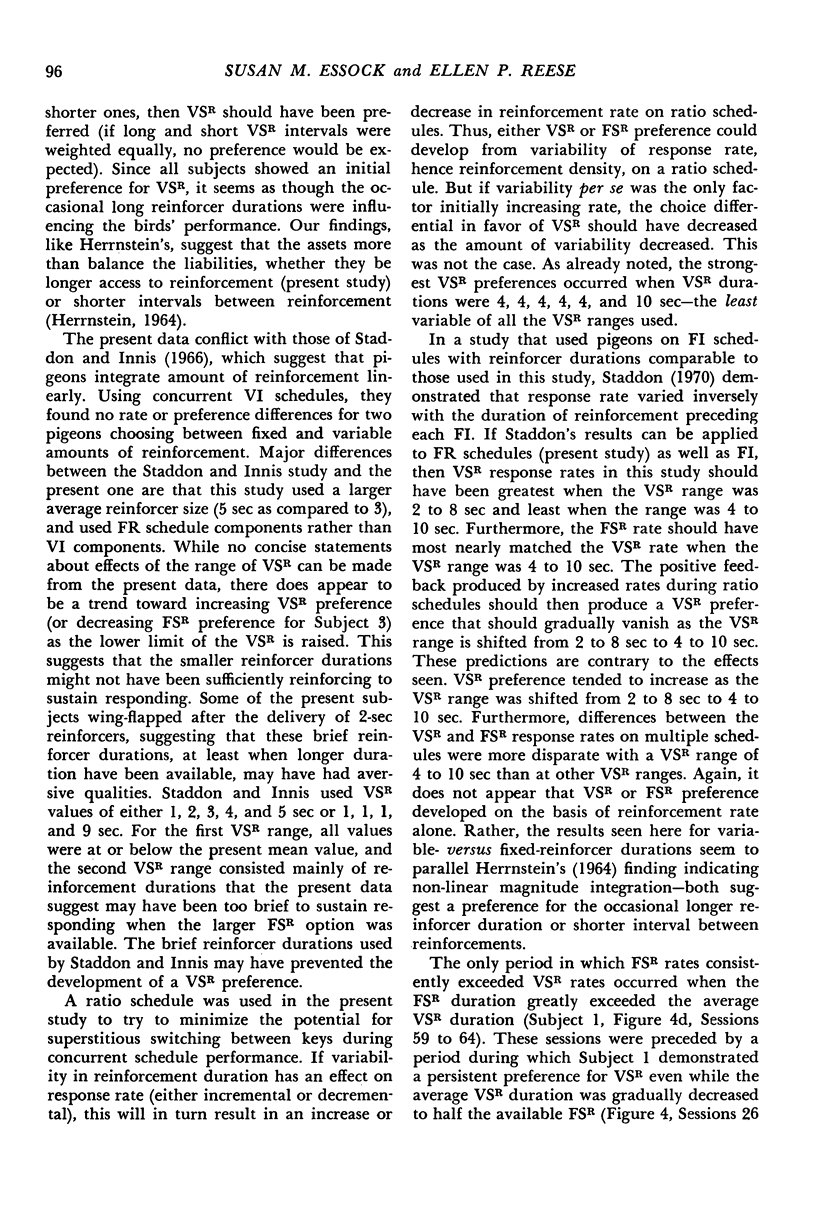
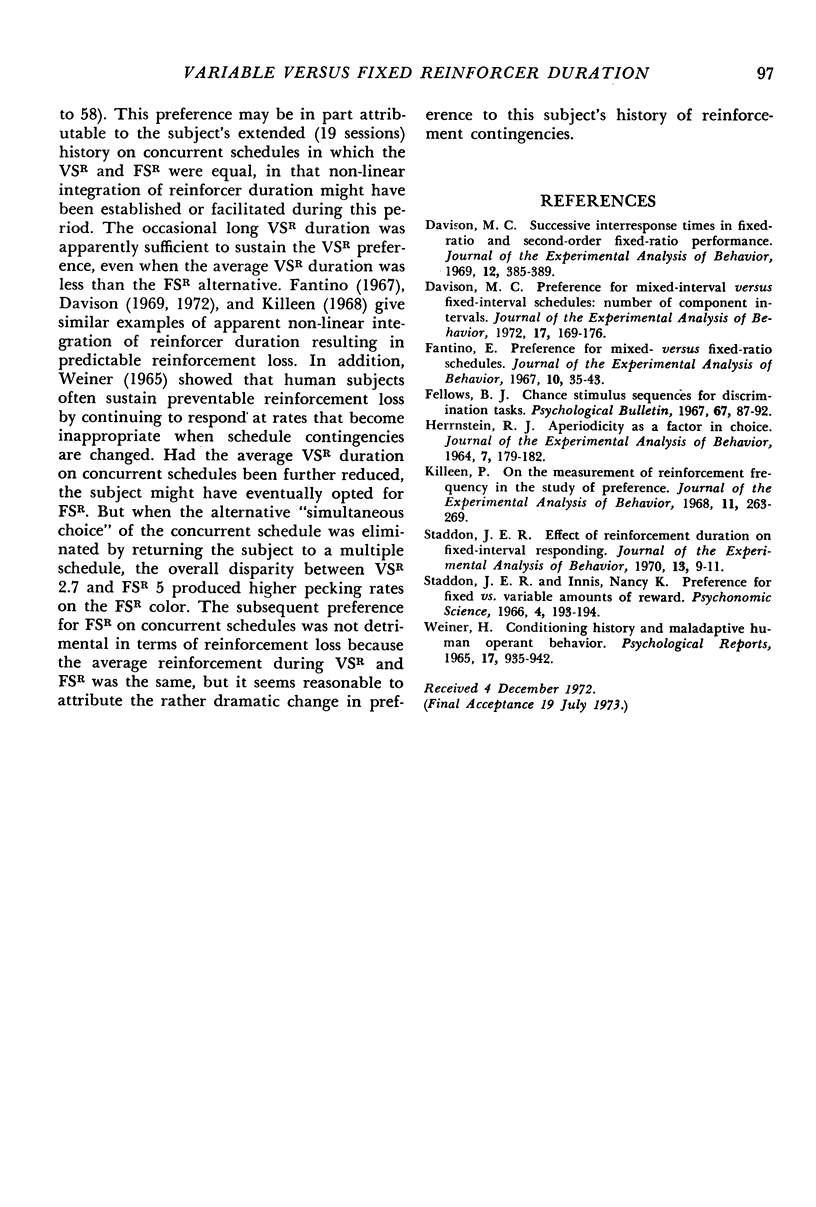
Selected References
These references are in PubMed. This may not be the complete list of references from this article.
- Davison M. C. Preference for mixed-interval versus fixed-interval schedules: number of component intervals. J Exp Anal Behav. 1972 Mar;17(2):169–176. doi: 10.1901/jeab.1972.17-169. [DOI] [PMC free article] [PubMed] [Google Scholar]
- Davison M. C. Successive interresponse times in fixed-ratio and second-order fixed-ratio performance. J Exp Anal Behav. 1969 May;12(3):385–389. doi: 10.1901/jeab.1969.12-385. [DOI] [PMC free article] [PubMed] [Google Scholar]
- Fantino E. Preference for mixed- versus fixed-ratio schedules. J Exp Anal Behav. 1967 Jan;10(1):35–43. doi: 10.1901/jeab.1967.10-35. [DOI] [PMC free article] [PubMed] [Google Scholar]
- Fellows B. J. Chance stimulus sequences for discrimination tasks. Psychol Bull. 1967 Feb;67(2):87–92. doi: 10.1037/h0024098. [DOI] [PubMed] [Google Scholar]
- HERRNSTEIN R. J. APERIODICITY AS A FACTOR IN CHOICE. J Exp Anal Behav. 1964 Mar;7:179–182. doi: 10.1901/jeab.1964.7-179. [DOI] [PMC free article] [PubMed] [Google Scholar]
- Killeen P. On the measurement of reinforcement frequency in the study of preference. J Exp Anal Behav. 1968 May;11(3):263–269. doi: 10.1901/jeab.1968.11-263. [DOI] [PMC free article] [PubMed] [Google Scholar]
- Staddon J. E. Effect of reinforcement duration on fixed-interval responding. J Exp Anal Behav. 1970 Jan;13(1):9–11. doi: 10.1901/jeab.1970.13-9. [DOI] [PMC free article] [PubMed] [Google Scholar]
- Weiner H. Conditioning history and maladaptive human operant behavior. Psychol Rep. 1965 Dec;17(3):935–942. doi: 10.2466/pr0.1965.17.3.935. [DOI] [PubMed] [Google Scholar]


